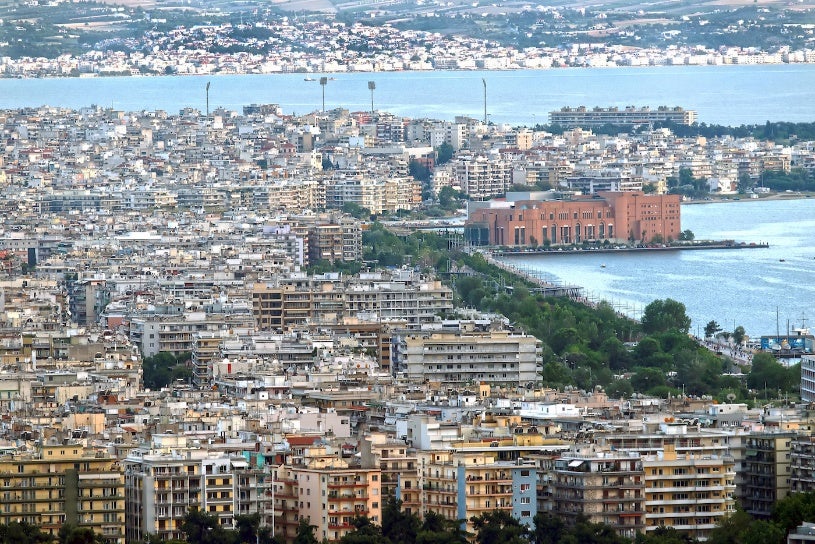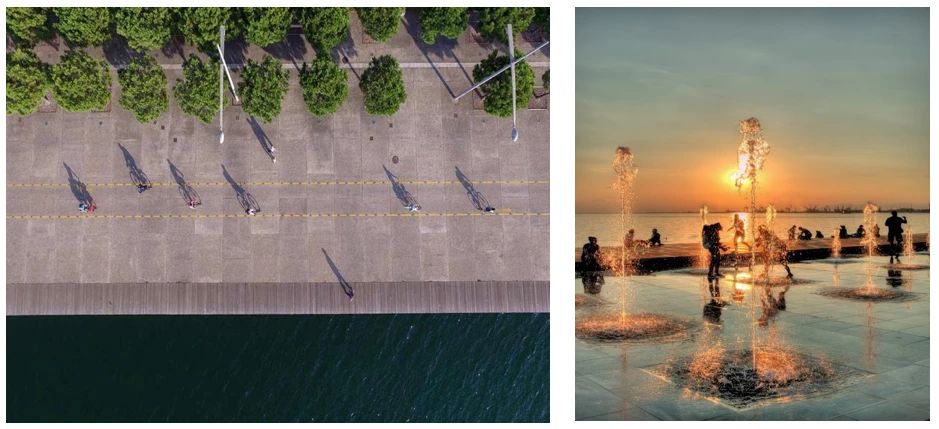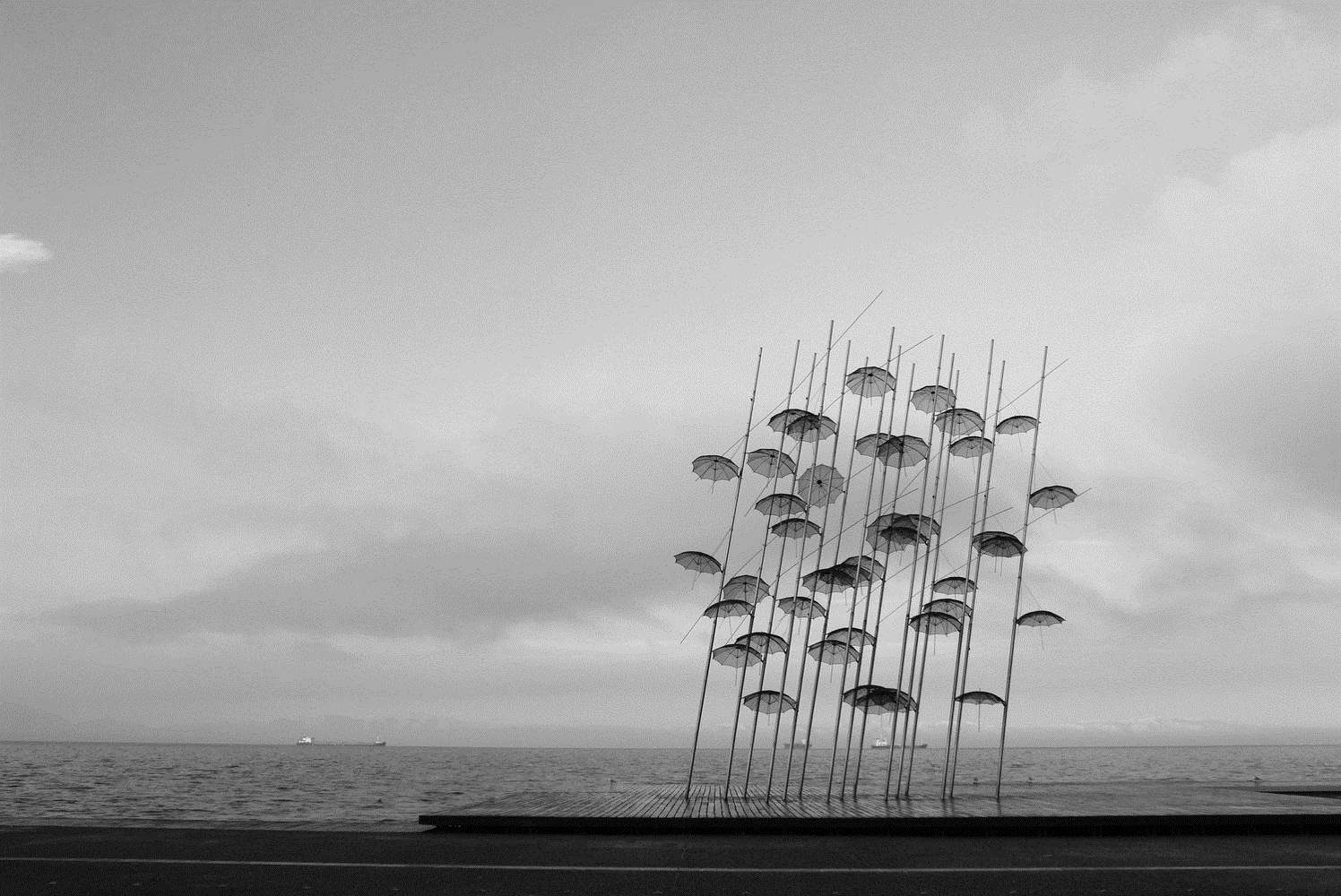 Photo Credit: Deloitte
Photo Credit: Deloitte
In Thessaloniki, a promenade along the Aegean Sea is dotted with fountains, sculptures, grassy parks, and the iconic “Umbrellas” art installation of the late Greek sculptor George Zongolopoulos. This is the city’s New Waterfront. Opened in 2013, it is part of a major long-term revitalization project to create vibrant thematic destinations along the city’s entire 8.5 km waterfront, combining leisure and sports activities with commerce – whilst linking it with parks, green areas, bikeways and pedestrian paths.

It’s a big task. But done right, the city will become more livable for residents, more productive for businesses, and more attractive for visitors.

This is why the city government has been working with the World Bank Group and a consulting firm on preparing a strategic investment and development plan to revitalize the waterfront – and to rally the support of residents and private companies.
Building infrastructure
In the Old Waterfront, where Thessaloniki got its start some 2,300 years ago, pathways are planned to reduce traffic and encourage livelier street life in this commercial and historical center.
At the southern end of the waterfront, a modern hub for music, cultural, athletic, and leisure activities is planned.
Behind the port, a new downtown is in the blueprints. The port, the country’s second-largest, was privatized in 2018, pushing up demand for services and jobs, making it a prime spot for business and housing. It’s only blocks away from downtown and close to road and rail networks. A new center is planned for the zone, combining commerce with the arts, sports, leisure, and housing. A new Holocaust Museum is under construction, and a cultural and recreation destination is planned on Pier 1, home to the State Museum of Contemporary Art.

A sustainable city
All of this is part of a wider plan — the 2030 Strategy Framework — to make the city more sustainable and inclusive, including by improving mobility, fostering the talent and well-being of its residents, strengthening the economy, and rediscovering the city’s relationship with the sea through a cleanup of the Thermaikos Bay.
Thessaloniki launched the 2030 Strategy in 2017, a couple years after becoming part of 100 Resilient Cities (100RC), an initiative sponsored by The Rockefeller Foundation. Through 100RC, Thessaloniki has leveraged partnerships and funding from a global network of cities also seeking to be better prepared for natural disasters and to increase their social and economic resilience.
The efforts are needed. The world’s urban population surpassed 50% in 2017, up from a third in 1960, according to the World Bank Group, and is expected to reach 68% in 2050, as per the United Nations’ forecast.
City leaders must move quickly to prepare for this growth so they can provide the services, infrastructure, and affordable housing that their expanding populations will need — and the lower-impact sustainability that people are demanding in the face of a changing climate. Like Thessaloniki, they would be wise to consider financing tools that harness the power of the private sector and real estate demand, such as through impact fees, or when a property owner receives a building permit in exchange for covering some of the cost of public infrastructure benefiting a defined geographic area. This helps to involve the private sector in the success of the revitalization project — and the city’s progress and resilience.
Thessaloniki’s strategy provides a roadmap for cities to make revitalization projects happen, from concept to implementation and financing , including by establishing the clear regulations that will encourage private companies to invest and also help communities to trust that the public goals will be achieved. This can make cities cleaner, greener, safer, and more efficient, keys to attracting companies, talent, and educators to improve economic potential and the overall quality of life.
It won’t be cheap. The world’s cities need $90 trillion in infrastructure investment through 2030, according the New Climate Economy, a project of the Global Commission on the Economy and Climate.
But it is imperative. The Inter-American Development Bank (IDB) said in a recent report that the growth of the urban population means cities will need “modern, efficient, and reliable infrastructure." If the development is not done adequately, “cities could soon become the largest concentration of unsustainable and inequitable human activities across the globe,” the IDB warned.
With such a daunting challenge, it is better to invest now like Thessaloniki.
Charles Newbery contributed to this blog post.
READ MORE:



Join the Conversation